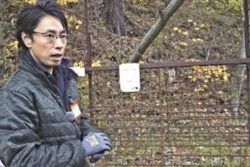13 Years Since Great East Japan Earthquake: Examine How to Deal with Declining Local Populations / Apply experience from Tohoku in Noto
16:18 JST, March 11, 2024
The Great East Japan Earthquake highlighted the reality of how difficult it is to rebuild townscapes and industries when a major disaster occurs in areas where the population is declining. Experience gained in the Tohoku region should be applied to reconstruction following the Noto Peninsula Earthquake.
It has been 13 years since the 2011 disaster that has left more than 22,000 people dead or missing. In the coastal areas of Iwate and Miyagi prefectures, which were hit hard by tsunami, the reconstruction of houses and the improvement of road and railway networks have almost been completed.
In Fukushima Prefecture, where a number of residents and others were forced to evacuate due to the accident at Tokyo Electric Power Company Holdings, Inc.’s Fukushima No.1 nuclear power plant, decontamination work has progressed in such areas as city centers. Evacuation orders are gradually being lifted, and the areas where people can live are expanding.
Creating new industries key
Infrastructure that is essential for people’s lives has been established. However, many people have not returned to the affected areas as was expected. According to the latest national census, the populations of the three affected prefectures are all declining faster than the national level.
In addition to the coastal areas of Fukushima Prefecture, where the number of residents has plummeted due to the nuclear accident, there are also municipalities in Miyagi and Iwate prefectures where the population has decreased by 30% to 40%. This shows how people flowed out during the protracted reconstruction work after the earthquake disaster hit a depopulated and graying region. This situation should not be overlooked.
It is important to develop industries in affected areas and ensure that residents have places to work. The ability to attract tourists and new residents will also be an issue.
The fishing industry, which is the core industry of the Tohoku region’s coastal areas, has been suffering from very low catches of saury and autumn salmon, its main quarry, in recent years due to rising sea water temperatures.
In an effort to overcome this situation, fishing cooperatives and fisheries businesses in the town of Otsuchi, Iwate Prefecture, and other areas are cooperating in the cultivation of silver salmon and trout salmon. Communities have been putting their heads together in attempts to create new local specialty products. Such efforts will hopefully be successful.
With regard to job creation, it is necessary to steadily promote the Fukushima Innovation Coast Framework, a national project to cluster cutting-edge industries such as robotics and aerospace in areas near the nuclear power plant, among other projects.
The Noto earthquake that occurred on New Year’s Day this year is similar in many ways to the Great East Japan Earthquake because depopulated and aging areas were hit by tsunami in both disasters. It is important to continue to provide long-term support, taking a cue from the steps taken by the disaster-stricken areas in Tohoku.
The lessons learned from Tohoku are also important in the process of urban planning for reconstruction.
Present concrete vision for future
The town of Minami-Sanriku, Miyagi Prefecture, which was devastated by tsunami 13 years ago, had planned to consolidate 19 fishing ports in the process of reconstruction, but it was unable to do so due to local opposition.
With generous support from the central government, Minami-Sanriku was able to rebuild the individual fishing ports, but now the cost of maintaining and managing them is weighing heavily on the town.
“We should have made the town more compact in anticipation of a decline in the population,” Minami-Sanriku Mayor Jin Sato said with regret, looking back on the situation. “There is Wajima lacquerware, tourism and traditional culture in Noto. If they can revive those industries, people will surely return,” he gave as advice.
Ishikawa Gov. Hiroshi Hase has set his sights on “creative reconstruction” for Noto’s revitalization. The idea is not simply to return Noto to its pre-earthquake state, but to evolve the communities to meet the needs of a declining population. This perspective certainly is important.
The governor said the prefecture will formulate a reconstruction plan in May or June. In order for residents to look ahead, a concrete vision of the future must be presented. The prefectural government and local municipalities should work together to promote community development while listening to the voices of residents.
In the wake of the Great East Japan Earthquake, there was a further expansion of volunteer activities that sprouted after the Great Hanshin Earthquake in 1995, with not only individuals but also a diverse range of organizations, including nonprofit organizations, rushing to the scene. A new method was created so that the groups shared roles with each other and devised ways to coordinate their activities according to the needs of the disaster victims.
Many Noto residents are still living in their damaged houses. There is a high demand for volunteers to distribute supplies and clean up affected houses. Volunteers from the disaster-affected areas in the Tohoku region are also participating in the activities, drawing on past knowledge.
The city of Higashi-Matsushima, Miyagi Prefecture, an area hit by the 2011 disaster, has succeeded in improving the efficiency of waste disposal through the so-called Higashi-Matsushima method, in which waste generated by the disaster is sorted before being transported to temporary storage sites.
The city also hired affected people as workers, and this has reportedly become a source of income for those who lost their jobs due to the tsunami. It may be worth considering applying such a method to the efforts in Noto.
Issues common across Japan
The issues facing the disaster-stricken areas in Tohoku are applicable not only to the Noto region, but they are also problems that all areas in Japan must face.
In an age of a declining birth rate and graying population, how should local industries and culture be promoted, and how should the environment for raising children and the medical system be improved? How will people rebuild their communities in the event of a major earthquake?
The central and local governments should utilize the problem-solving knowledge that has been acquired through supporting the disaster-stricken areas in the Tohoku and Noto regions for disaster preparedness and community revitalization in other local areas across the nation.
(From The Yomiuri Shimbun, March 11, 2024)
"Editorial & Columns" POPULAR ARTICLE
-

Violations of Subcontract Law: Major Automakers Must Eliminate Old Practices
-

Local Governments’ Tax Revenues: Devise Ways to Correct Imbalances in Tax Sources
-

5 Japanese Business Dinner Mistakes to Avoid — and What They Taught Me About Business in Japan
-

Heavy Rains in Asia: Support for Victims, Flood-Control Measures Urgently Needed
-

Rice Coupons: A Misguided Approach to Countering Rising Prices
JN ACCESS RANKING
-

Keidanren Chairman Yoshinobu Tsutsui Visits Kashiwazaki-Kariwa Nuclear Power Plant; Inspects New Emergency Safety System
-

Tokyo Economic Security Forum to Hold Inaugural Meeting Amid Tense Global Environment
-

Imports of Rare Earths from China Facing Delays, May Be Caused by Deterioration of Japan-China Relations
-

University of Tokyo Professor Discusses Japanese Economic Security in Interview Ahead of Forum
-

Japan Pulls out of Vietnam Nuclear Project, Complicating Hanoi’s Power Plans




















